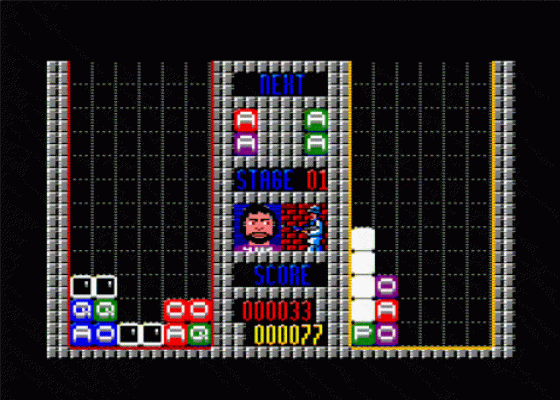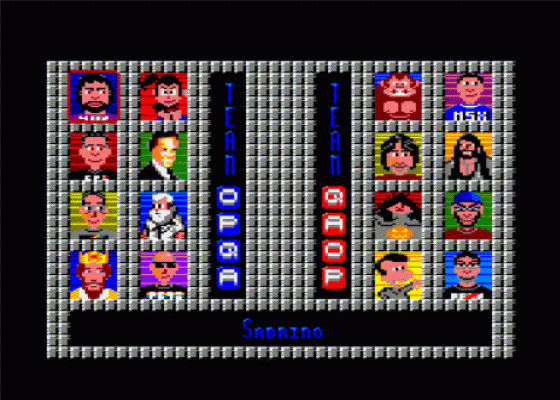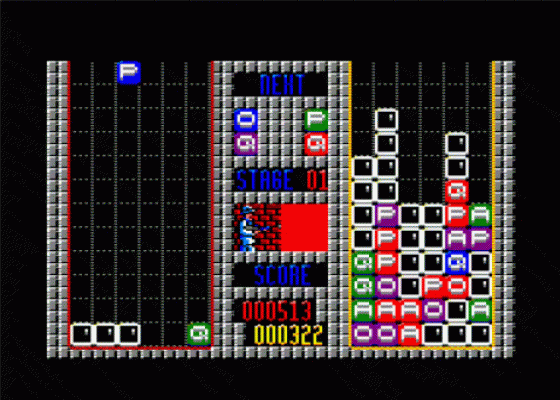
Eight Bit Magazine
 1st December 2019
1st December 2019
Categories: Review: Software
Author: Neil Reive
Publisher: Manuel Sagra
Machine: Amstrad CPC464/664
Published in 8 Bit Annual 2019
OPQA Vs. QAOP: The Final Battle
OP-QA, erm, Q-A-O-P? OPQA vs. QAOP? What's that all about then? Well, apparently, this relates to the two differing ways various development community factions refer to the keyboard configuration used in games. Some people are adamant that it's OPQA, while others insist it's QAOP. It's amusing how people can be so divisive over such a logical sequence of letters; of course, it's QAOP. End of! [Why can't 8-Bit gamers end all these 8-Bit wars and just all get along? Using a joystick is my solution! - Ed]
Manuel Sagra de Diego thought that the subject was so intriguing that he based his CPCRetroDev 2018 entry on this key configuration debate. OPQA vs. QAOP: The Final Battle, came in fifth place and just missed out on a prize in the game creation contest.
Plot And Gameplay
The gameplay is similar to the classic Puyo Puyo tile-matching puzzle game. The game's main playing area has two grids, with one player on the left and the other player on the right. Sets of random coloured tiles (comprising of two sets of randomly coloured blocks) drop slowly down from the top of the grid. It's the players' task to manoeuvre the tile left, right, or rotate it towards the bottom of the grid, hopefully to make a combo of four or more similar colours.

The game options are Story Mode, Versus Mode, Mission mode, or Endless Mode, so there is plenty of choice and replayability on offer here. Speed is a key factor in OPQA, as by making chains of coloured tiles, the player is not only rewarded with points but the opponent's grid is filled up by a matching blank tile. The winner is the surviving player whose grid has not been filled up by tiles.
While matching colours will create chain effects, there are a couple of special moves to look out for. A special purple tile will eliminate any colour that it falls onto. Also, the tiles not only have colours, but also variations of the letters OPQA in them. If the OPQA team manage to form a combination of OPQA, either up or down, then they are awarded with 1,000 points and a double dose of trash tiles sent to the opponent's grid. Be careful, though, as combining QAOP will result in the player's score being reset to zero.
What I Didn't Like
Right from the menu screen, the game shows how polished it is, as a great little soundtrack plays away while the two different teams profile images scroll smoothly down either side [Outstanding main title tunes so good you could make a dance anthem out of it, so jolly and catchy - Ed].

The graphics are clear and colourful, displaying the CPC's vibrant palette in all its glory. It was also a nice touch to include CPC sceners in the two OPQA and QAOP teams. OPQA vs. QAOP: The Final Battle plays smoothly and is very responsive of the player's key inputs, so any mistakes will be down to the player rather than the controls. There are plenty of different modes to play, so if one mode proves to be a tad frustrating there are others to try out.
What I Like
While not a major flaw in the game, the loading screen is not quite up to the same standards as the rest of the game. It would have been nice to see those super vibrant colours used for a great loading screen.
Verdict
Excellent graphics, a great soundtrack, varied options, responsive controls, and good lastability make OPQA vs. QAOP: The Final Battle a super effort all around.










